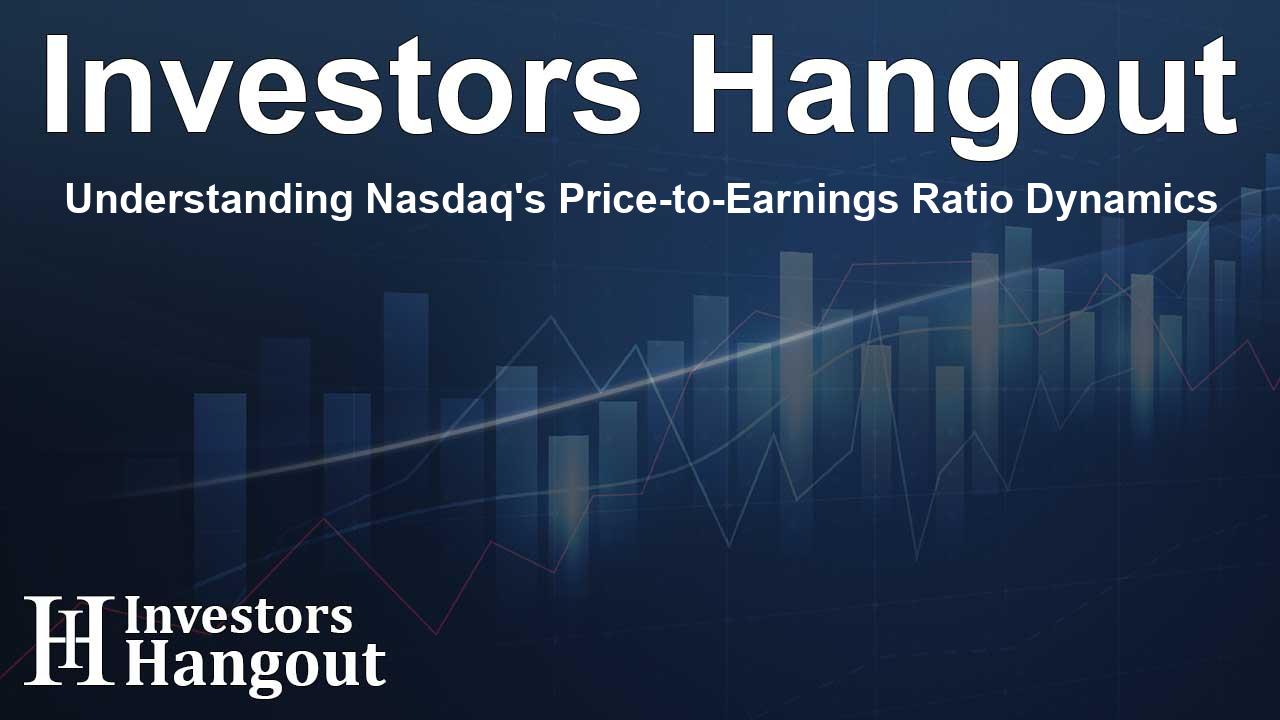Understanding Nasdaq's Price-to-Earnings Ratio Dynamics

Evaluating Nasdaq Inc. and Its Market Position
In today's financial landscape, investors are keen to understand the stock market better. One of the crucial insights involves monitoring the performance of companies like Nasdaq Inc. (NASDAQ:NDAQ). As of now, the share price of Nasdaq is reported at $85.58 with a minor increase of 0.19%. Despite a 1.43% decline over the last month, the stock has risen by an impressive 15.84% compared to a year ago. For current shareholders and potential investors, understanding if this valuation reflects a fair assessment is key.
Analyzing the Importance of the P/E Ratio
The price-to-earnings (P/E) ratio is a key indicator employed by long-term shareholders when evaluating a company's market performance. It serves as a benchmark for comparing a company's earnings with its market value. A lower P/E ratio can sometimes hint at potential undervaluation or indicate that market participants do not anticipate significant growth in the company’s future performance.
When we consider Nasdaq’s current P/E ratio, it is notably lower than the average P/E of 151.89 within the Capital Markets sector. While this may raise concerns that Nasdaq might underperform compared to its peers, it can equally suggest an undervaluation scenario worth exploring.
Understanding Market Dynamics through P/E Ratios
The dynamics of the stock market can fluctuate based on various external and internal factors influencing P/E ratios. A lower P/E might seem attractive to value investors, but it's essential to recognize that this ratio alone does not tell the entire story. Factors such as industry trends, economic conditions, and market sentiment also play pivotal roles in determining stock valuations.
In fact, a low P/E ratio might lead shareholders to speculate that the company is not poised for growth, which can impact investor sentiment negatively. Therefore, a deeper analysis involving various financial metrics and qualitative assessments is always beneficial for making informed investment decisions.
Limitations of the P/E Ratio
While the P/E ratio remains an important metric for assessing market performance, reliance on this singular figure can be misleading. Investors should be aware of its limitations and the need for a comprehensive analysis. For instance, the P/E ratio does not take into account factors like upcoming product launches, regulatory changes, or shifts in consumer behavior that can have a significant impact on a company's earnings.
Ultimately, coupling the P/E ratio with other evaluation metrics, such as earnings growth rates and industry comparisons, gives a clearer picture. This multifaceted approach helps delineate whether a stock is truly undervalued or overvalued.
Strategic Considerations for Investors
For those observing Nasdaq's trajectory, monitoring its P/E ratio amidst broader market conditions will provide insights into its standing among competitors. Engaging with earnings reports and market news can illuminate aspects that affect this ratio and company valuations. As an investor, staying updated and assessing multiple indicators will empower more effective decision-making.
In conclusion, while Nasdaq's P/E ratio provides valuable data points, relying solely on this metric can lead to decisions that may not align with market realities. A well-rounded analysis, including consideration of qualitative factors, is essential for any investor looking to navigate the complexities of the stock market.
Frequently Asked Questions
What does a lower P/E ratio signify for Nasdaq?
A lower P/E ratio may indicate that Nasdaq is undervalued, or it may reflect market expectations of less growth compared to peers.
Why should investors consider other metrics alongside P/E?
Other metrics provide a more comprehensive view of a company's performance and growth potential, which is essential for making informed decisions.
How does Nasdaq's P/E ratio compare with industry averages?
Nasdaq's P/E ratio is lower than the industry average of 151.89, which may suggest it is undervalued or expected to perform worse than peers.
What factors can affect the P/E ratio?
Factors such as market conditions, economic changes, and industry performance can all impact the P/E ratio significantly.
Is the P/E ratio a reliable indicator for stock evaluation?
While it is useful, the P/E ratio should not be the sole determinant of stock valuation; it must be analyzed with other financial indicators.
About The Author
Contact Hannah Lewis privately here. Or send an email with ATTN: Hannah Lewis as the subject to contact@investorshangout.com.
About Investors Hangout
Investors Hangout is a leading online stock forum for financial discussion and learning, offering a wide range of free tools and resources. It draws in traders of all levels, who exchange market knowledge, investigate trading tactics, and keep an eye on industry developments in real time. Featuring financial articles, stock message boards, quotes, charts, company profiles, and live news updates. Through cooperative learning and a wealth of informational resources, it helps users from novices creating their first portfolios to experts honing their techniques. Join Investors Hangout today: https://investorshangout.com/
The content of this article is based on factual, publicly available information and does not represent legal, financial, or investment advice. Investors Hangout does not offer financial advice, and the author is not a licensed financial advisor. Consult a qualified advisor before making any financial or investment decisions based on this article. This article should not be considered advice to purchase, sell, or hold any securities or other investments. If any of the material provided here is inaccurate, please contact us for corrections.
